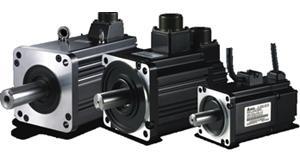The difference between servo motor and inverter
The basic concept of servo is accurate, accurate and fast positioning. Frequency conversion is a necessary internal link of servo control, and there is also frequency conversion in the servo drive (to carry out stepless speed regulation). However, the servo closes the current loop speed loop or the azimuth loop, which is a big difference. In addition, the construction of servo motor is different from that of a general motor to meet fast response and accurate positioning. Nowadays, the communication servo motors circulating on the market are mostly permanent magnet synchronous communication servos. However, such motors are subject to process constraints, and it is difficult to achieve a large power. The synchronous servo price of more than ten KW is expensive, so that it is allowed in the field. In the case of communication, asynchronous servo is often used. At this time, many drivers are high-end inverters with encoder feedback closed-loop control. The so-called servo is to meet the accuracy, accuracy and rapid positioning. As long as it is satisfied, there is no competition for servo frequency conversion Shenzhen Mitsubishi servo motor. First, the commonality of the two:
The communication servo skills themselves are learning and using the frequency conversion skills, based on the servo control of the DC motor, the PWM method of the frequency conversion is modeled on the control of the DC motor. The method is completed, that is to say, the communication servo motor must have this part of frequency conversion: the frequency conversion is to rectify the communication frequency of 50, 60HZ of the power frequency into direct current, and then pass through various types of transistors (IGBT) that can control the gate. , IGCT, etc.) The frequency-adjustable waveform after carrier frequency and PWM conditioning is similar to the sinusoidal pulsating power. Because the frequency is adjustable, the speed of the communication motor can be adjusted!
Because of the inverter and servo The difference in performance and function, so the use is not the same:
1, in the speed control and torque control, the requirements are not very high general frequency converter, there are also in the upper position plus the azimuth feedback signal to form a closed loop frequency conversion For the azimuth control, the accuracy and echo are not high. Some existing frequency conversions also accept the speed of the pulse sequence signal manipulation, but it seems that the orientation cannot be directly manipulated. 2, in the case of strict azimuth control requirements can only be done with the servo, and the servo response speed is much greater than the frequency conversion, and some servo speed control is also used for the speed accuracy and high response requirements. The situation that can be controlled by frequency conversion can be replaced by servo. The key is two points: First, the price servo is much higher than the frequency conversion, and the second is the reason of the power: the frequency conversion can achieve several hundred KW, or even higher. The servo is as large as tens of KW.


